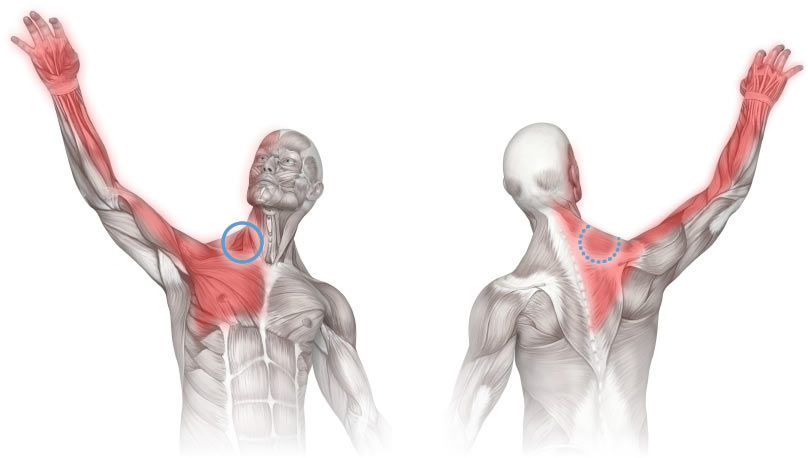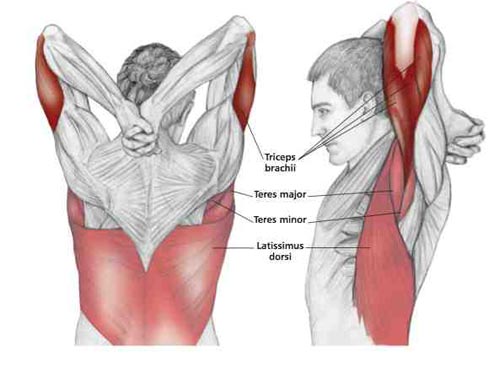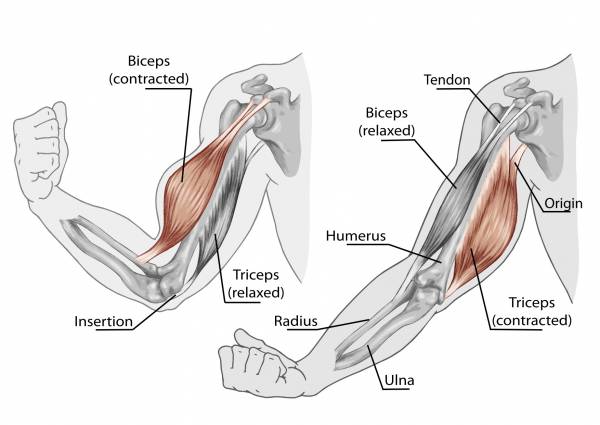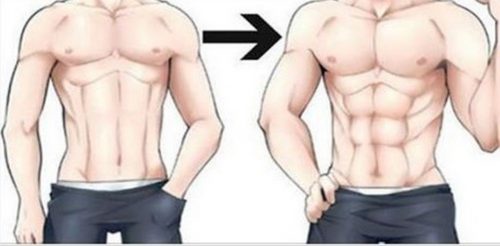Have you heard these statements before?
“Hit a muscle hard, then let it recover, train it again 5-7 days later.”
“After training a muscle, don’t hit it directly or indirectly for at least 3 days.”
“A muscle needs 72 hours of recovery after intense strength training.”

But what if these statements were holding back your muscle gains and strength development? What if you can progress faster by disregarding this?
You can!
Double stimulation training is a unique way to shock your muscles for growth. Double stimulation training involves working the same muscle group two days in a row and delays protein synthesis. Delaying protein synthesis and training a muscle two days in a row may or may not be beneficial for everyone.
Double Stimulation Reality
When you look at a variety of athletes, you will see that CrossFit athletes work the whole body daily . Russian powerlifters perform the bench, deadlift and squat multiple times weekly. Olympic lifters snatch, clean & jerk and squat nearly every day.
It’s simplistic to believe in the “train, rest the muscle for 72-96 hours, train again” statement.
Adaptation is a continuous process. It doesn’t have distinct catabolic then anabolic periods. The body is constantly breaking down and building up muscle tissue. The ratio will vary depending on various elements like training status, nutrition and rest.
I’m here to present a training technique and a method that will help you build muscle at a much faster rate and also blast through strength plateaus.
When you hit the same muscle group two days in a row, then you can feel a much better contraction on the second day and get a better pump. Afterwards, the muscle will stay pumped looking for longer. But a third day in a row for the same muscle can feel flat.
There are three main advantages to doing a second bout of resistance training 24-36 hours after the first stimulation.

1. Prolonged Protein Synthesis
This prolongs the duration of the period of increased protein synthesis after the main stimulation (day one workout.)
After a training session, protein synthesis and breakdown are both elevated. The first four hours, protein breakdown can be elevated more than synthesis. For the rest of the duration, synthesis becomes higher up to 24 hours and returns to normal within 24-36 hours of the first stimulation.
You have 20 hours of very high protein synthesis (muscle building.) Doing a second session 24 hours after the first means you can extend that by 12 or even 24 more hours.
It only works optimally when correct workout nutrition is used. If you do the correct workout along with good nutrition, protein degradation will be low, resulting in more protein synthesis. This means muscle gain.
If the second workout is more of a “pumping or bringing blood into the muscle” training, you enhance nutrient delivery to the still recovering muscle.
The more nutrients you give to the muscles involved in the first workout, the more they’ll grow. Also a boost in amino acid uptake will increase protein synthesis.
The second workout is there to enhance the anabolic response to the first workout. This prolongs the period of increased protein synthesis and also increasing nutrient transport to the muscles.

2. Enhanced Feedback
Enhanced feedback is a great method to improve mind and muscle connection.
When you train a muscle hard you are aware of it the next day. The increase in awareness could range from “increase in tenderness” to “sore.”
When you train a muscle again whilst in this state of increased awareness, you’ll feel that muscle to a much greater extent. This can be useful for those who have a harder time contracting a specific muscle.
An example: If you don’t recruit your pectorals as well as your triceps or deltoids when bench pressing, doing isolated pectoral work the day after you bench press can help you improve your mind muscle connection with that muscle.
If you can’t feel a muscle properly when lifting, you likely aren’t stimulating it optimally. Improving your mind muscle connection with a lagging muscle is important for your future gains.

3. Enhanced Muscle Responsiveness
The day after being stimulated with heavy work, a muscle is more responsive to training.
Your force production potential is lower because the muscle might not be fully recovered or the stiffness/soreness might affect your capacity to perform.
If you train that muscle with less traumatic training methods, lighter weights, focusing on the quality of the contraction and on muscle fatigue/pump instead of performance – you will get a better response than you would if you did the same work with a fresh muscle.
This is great for bringing up a lagging muscle group. Either a muscle that’s visually smaller or a weak muscle holding back your strength in a big lift.
If you’re a focusing mostly on strength, a good way to strengthen a weak muscle is to do some lighter hypertrophy work on the muscle group the day after you trained the main lift.
For example, you bench pressed heavy on Monday and found that you could push the weight off your chest but grind the lockout. Using this method, the next day you’d perform bodybuilding work for the triceps to start your workout.
Do 10-15 minutes of triceps work at the beginning of your Tuesday workout and then move on to your normal workout for that day (squats for example).
If you’re focused more on building muscle mass and you have a lagging muscle group, train it two days in a row. In the first (harder) session do your regular workout. Start the next day’s workout by doing 10-15 minutes of isolation pump work for the lagging muscle.

Put the double stimulation method to work, you can use this approach for three main purposes:
1. Faster Overall Size Gains
This is if you want to increase the gains you get from your main workouts. It requires that you split your training into synergist groups:
Day 1: Pressing muscles (pecs, triceps, delts)
Day 2: Pulling muscles (back, traps, biceps)
Day 3: Legs (quads, hamstrings, calves)
It ideally requires training every day or using a 4 on, 1 off schedule. See below for your main workout timetable:
Day 1: Legs-low intensity pump work. Pressing muscles-main workout
Day 2: Pressing muscles-pump work. Pulling muscles-main workout
Day 3: Pulling muscles-pump work. Legs-main workout
Day 4: Legs-pump work. Pressing muscles -main workout
Day 5: Pressing muscles-pump work. Pulling muscles-main workout
Day 6: Pulling muscles-pump work. Legs-main workout
Day 7: Legs-pump work. Pressing muscles-main workout
You can take days off during the week. If you do, don’t do the pump work at the beginning of the workout. You have to do it within 24-36 hours of the main session.
If you want to do a 4 on 1 off split it would look like this:
Day 1: Pressing muscles- main workout
Day 2: Pressing muscles-pump work. Pulling muscles-main workout
Day 3: Pulling muscles-pump work. Legs-main workout
Day 4: Legs-pump work. Abs, conditioning-optional
Day 5: OFF
Repeat

Low Intensity Pump
Low intensity pump work should be exactly what it says. Save high intensity for your main workout.
It’s only to push more nutrient rich blood into the muscles worked the previous day. Keep this first part of your workout under 15 minutes.
If you’re using this first approach, you’ll need to pump all the muscles trained the previous day. You must do this in less than 15 minutes, so do it as a circuit with one exercise for each of the muscles trained the day before.
For example, if your main workout Monday was pressing muscles, Tuesday you’d start with a circuit like this:
One isolation exercise for the pectorals-pec deck machine, cable crossover, squeeze press, cable flyes, etc.
One isolation exercise for the deltoids-front raise, lateral raise, 3-way laterals, etc.
One isolation exercise for the triceps-dumbbell triceps extension, cable pressdown, etc.
The reps should be between 8 and 12.
You should use “constant tension,” this contraction means that you control the movement, flexing the target muscle as hard as you can on every rep, never relaxing the muscle before the end of the set.
If you do 8-12 reps with the constant tension method, it means that each set should last at least 30 seconds and up to 50 seconds.
The pump portion would look like this:
Pec deck machine, 8-12 reps with constant tension
15 seconds of rest
Dumbbell lateral raise, 8-12 reps with constant tension
15 seconds of rest
Rope pressdown 8-12 reps with constant tension
30-45 seconds of rest
Do this 3 to 5 times, as long as you’re finished in 15 minutes or less.

2.Bring Up a Slow-to-Grow Muscle Group
This is an easier approach to plan since you’ll only do the feeder workout in one or two sessions a week. It’ll be easier to include rest days and will allow you more leeway in selecting your training split.
Choose one or two stubborn muscle groups in a training cycle. Then, every time you train one of these muscle groups, do a second stimulation session 24-36 hours later.
Since you’re only training one muscle group in your stimulation session, you don’t have to do a circuit. In 15 minutes you can do two exercises using straight sets of 8-12 reps with a constant tension rep, or intensity techniques like drop sets, rest pause, partials, etc.
It’ll look like this:
Reps per set: 8 to 12
Sets: 3 or 4 per exercise
Number of exercises: 2 or 3 (if doing a superset)
Basic style of repetition: Constant tension
Possible intensity methods: drop set, rest pause, full reps with added partial reps, or occlusion training
The goal of these stimulation workouts for slow to grow muscles is to fill the muscle with as much blood as possible. The weight is irrelevant since you have done your heavier work the day prior.

3. Strengthen a Weak Muscle Group
Your focus here is for a muscle that’s a weak link in a big compound movement. For example, your triceps could be your weak muscle in the bench press, or weak glutes in the deadlift.
This approach is for individuals training mostly for strength or doing a strength phase in which you focus on one main lift per workout.
Every time you perform a big lift, question which muscle is the weakest of the prime movers. Then, begin the next day’s workout with isolation work for that muscle.
Our goal is to develop strength and not necessarily size, so we use different loading parameters to correct the weakness:
Reps per set: 6 to 8
Sets: 6 to 8
Number of exercises: 1 (choose the exercise where you feel the target muscle group the most.)
Basic style of repetition: Control the eccentric or lowering phase, accelerate during the concentric or lifting phase.
Possible intensity method: Rest pause, but stick mostly to normal sets.
Workout Nutrition:
Remember, feeder sessions work by increasing nutrient transport to the muscles that were trained hard 24 hours earlier. This is to extend the anabolic period and maximize protein accretion as muscle mass when anabolism/protein synthesis is increased.
You will need the ample supply of amino acids and carbohydrates – to volumize the muscle cells and increase protein uptake by the muscles, prior and during the feeder workout is of prime importance.




Post your comment